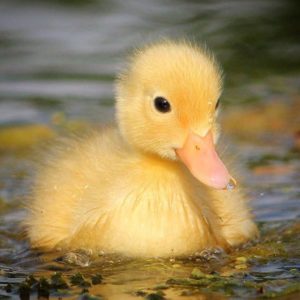One of the main conditions for the health of ducks
is a properly selected diet from the first days of their lives. It is in the first month of life that the most important processes occur. Immunity is formed, the bone structure of the body grows and strengthens, and the muscular skeleton is actively developing. For all this, the body of a bird spends a colossal amount of energy. In order to provide ducklings with the most balanced diet, we must take into account the changing needs of the body during its development.Feed types
To obtain all the necessary nutrients, the bird’s body needs the presence of several types of feed in the diet. More precisely, the presence of several components of various types is necessary to maintain a balanced diet.
They include:- Cereal crops form the basis of a bird’s diet. They are the main source of carbohydrate, which provides the entire body with energy (fuel) for the implementation of all vital processes. Cereals include: corn, wheat, barley, oats and others.
- Legumes. A source of not only carbohydrate, but also protein of vegetable origin. Protein is the main builder, it is part of all cells and membranes of the body. Legumes include: peas, lupins, chickpeas, soybeans and others.
- Food industry waste (cake, meal, potato and flour waste, bran, yeast). Sources of proteins, fats, vitamins and trace elements.
- Root vegetables and greens. The main part of the summer diet of birds. From it, the body of a bird can receive almost the entire range of nutrients it needs. These are green onions, clover, alfalfa, cabbage, carrots, pumpkin and others.
- Feed of animal origin. An indispensable source of animal protein and trace elements for home maintenance. They include: bone, meat and bone and fish meal.
- Minerals. Sources of calcium, phosphorus, sodium, iron, copper, zinc and other components. These include: shell, chalk, sand, eggshell, table salt.
0-14 days

The first meal of the day lays the foundation for the future health of the chick. And the sooner it happens, the stronger this foundation will be. Since the first meal activates the mechanism of the formation of the immune system and the development of the body. Egg yolk is considered the standard and most useful option. For the first week, it will make up the bulk of the baby’s diet. Until day 5, feeding should be done 7-8 times a day, every 2 to 3 hours.
Starter feed for ducklings can be given from the second day. It has a high degree of grinding and mixing, and a large number of necessary components in the composition. Therefore, for a fragile, but actively growing, organism, this will be an excellent option. With home or mixed feeding, starting from day 3, greens can be added to the diet. It is good to start with young green onions. Later, you can introduce dandelions, clover and others. The total amount of greens at this stage should not exceed 15% of the total diet. All greens must be chopped before serving and be sure to monitor its purity. There is a risk with greens to bring pollen of poisonous plants into the esophagus of birds. Especially in August, when ambrosia blooms.
From the fifth day, you can make more significant changes in the diet. The frequency of feeding is reduced from 8 to 5 times a day. It is allowed to introduce new components into the diet, such as: cottage cheese, reverse, boiled potatoes, fish and meat and bone meal, fodder yeast. Another innovation will be a separate container with mineral additives (chalk, shell, sand and other elements).
14-30 days
Starting from the second week, drinkers can be changed 2 times a day and disinfected once a week. But it is necessary to put another container of water in which the chickens will bathe and clean the feathers. Do not leave baths for a long time, in order to avoid hypothermia of the chicks. Nutritional changes. You can feed twice a day, and give greens and root crops in between. Now the chickens can be given a wet mash. The basis for it can be reverse, whey or broth.
Approximate composition:- base (milk or broth),
- crushed corn,
- ground wheat,
- crushed barley,
- egg,
- meat and bone or fish meal.







